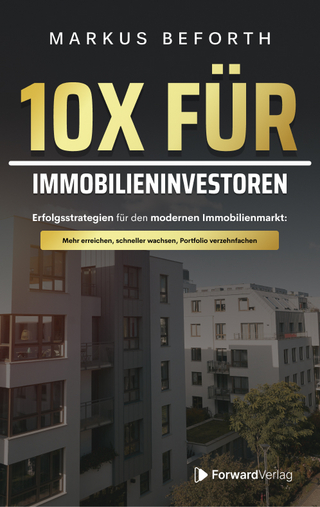
Healthy Buildings
Harvard University Press (Verlag)
978-0-674-27836-3 (ISBN)
A revised and updated edition of the landmark work the New York Times hailed as “a call to action for every developer, building owner, shareholder, chief executive, manager, teacher, worker and parent to start demanding healthy buildings with cleaner indoor air.”
For too long we’ve designed buildings that haven’t focused on the people inside—their health, their ability to work effectively, and what that means for the bottom line. An authoritative introduction to a movement whose vital importance is now all too clear, Healthy Buildings breaks down the science and makes a compelling business case for creating healthier offices, schools, and homes.
As the COVID-19 crisis brought into sharp focus, indoor spaces can make you sick—or keep you healthy. Fortunately, we now have the know-how and technology to keep people safe indoors. But there is more to securing your office, school, or home than wiping down surfaces. Levels of carbon dioxide, particulates, humidity, pollution, and a toxic soup of volatile organic compounds from everyday products can influence our health in ways people aren’t always aware of.
This landmark book, revised and updated with the latest research since the COVID-19 pandemic, lays out a compelling case for more environmentally friendly and less toxic offices, schools, and homes. It features a concise explanation of disease transmission indoors, and provides tips for making buildings the first line of defense. Joe Allen and John Macomber dispel the myth that we can’t have both energy-efficient buildings and good indoor air quality. We can—and must—have both. At the center of the great convergence of green, smart, and safe buildings, healthy buildings are vital to the push for more sustainable urbanization that will shape our future.
Joseph G. Allen is Director of Harvard’s Healthy Buildings Program and Associate Professor at the Harvard T. H. Chan School of Public Health. A renowned forensic investigator of “sick buildings” and frequent keynote speaker, he advises leading companies around the world on healthy building strategies. A key voice in communicating the science of COVID transmission to the public, he has appeared on CBS, CNN, CNBC, and Bloomberg, and has written many influential pieces for the Washington Post, New York Times, Atlantic, and USA Today. He is Chair of The Lancet COVID-19 Commission Task Force on Safe Work, Safe School, and Safe Travel. John D. Macomber is Senior Lecturer at Harvard Business School and a world leader on the financing of resilience. He is the author of dozens of HBS case studies on infrastructure projects, focusing on office buildings in the United States, housing in India, water management in Mexico, and private sector–led new cities in Asia.
| Erscheinungsdatum | 23.09.2022 |
|---|---|
| Zusatzinfo | 17 illus., 11 tables |
| Verlagsort | Cambridge, Mass |
| Sprache | englisch |
| Maße | 156 x 235 mm |
| Gewicht | 680 g |
| Themenwelt | Technik ► Architektur |
| Wirtschaft ► Betriebswirtschaft / Management ► Rechnungswesen / Bilanzen | |
| Betriebswirtschaft / Management ► Spezielle Betriebswirtschaftslehre ► Immobilienwirtschaft | |
| Wirtschaft ► Volkswirtschaftslehre | |
| ISBN-10 | 0-674-27836-4 / 0674278364 |
| ISBN-13 | 978-0-674-27836-3 / 9780674278363 |
| Zustand | Neuware |
| Informationen gemäß Produktsicherheitsverordnung (GPSR) | |
| Haben Sie eine Frage zum Produkt? |
aus dem Bereich


